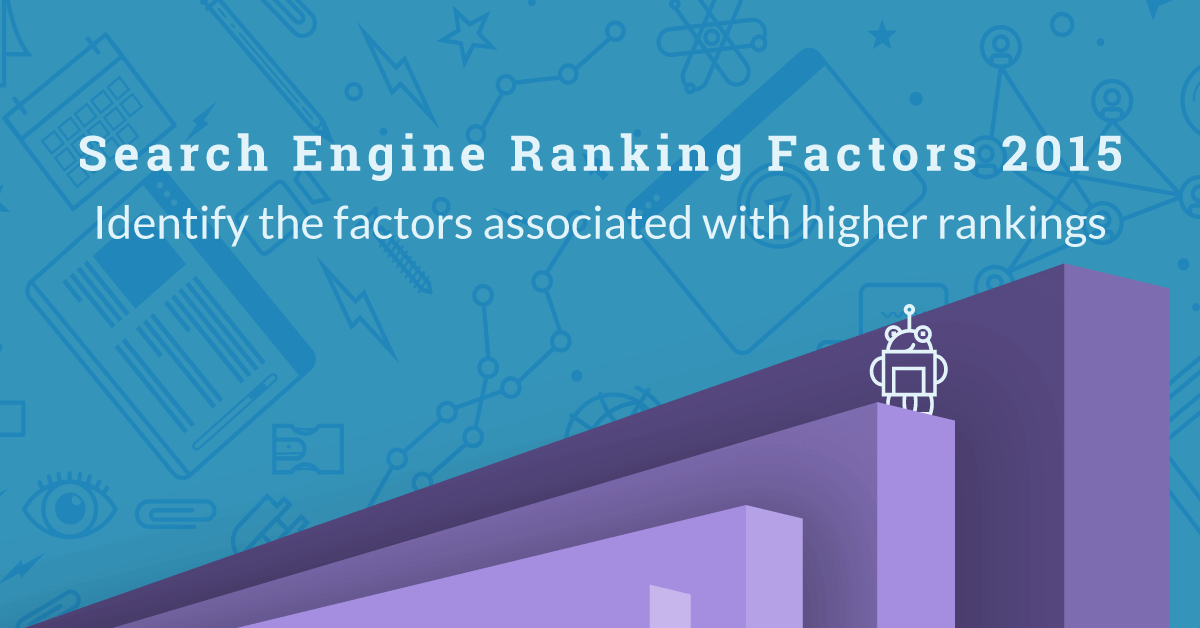Search Engine Ranking Factors 2015

Below you will find some key points you should consider when setting up your SEO strategy, structuring the technical elements of your site and creating content. However, I strongly advice you to have a look also at the original study.
# Meta descriptions
One of the most important ranking factors is the presence of a meta description on the page. A generic page description may positively impact your rankings.
Remember to use a different meta description as well as title for every page, and to include your main keywords for organic rankings, but also for increased click-through rates.
# Headings
As always, headings are extremely connected with high rankings. Therefore, your pages should always include heading tags, especially an H1 tag and if you can an H2 tag.
# Keyword based domains
Keyword based domains don’t seem to matter anymore as there was a decrease in keyword-based domains. Therefore, you don’t need to incorporate your keywords into your domain, unless is a natural fit or they are directly tied to your brand.
# Use of images
Include eye catching images in your posts and pages and don’t forget to optimise them. According to the research, top-ranking landing pages contained 25% more images than in 2014.
# Fonts
Try to use an average font size of 14 pts in the navigation bar and header, and 12 pts in the main body.
# Content
Try to keep your most important content on your root domain, as 75% of top-ranking results were on root domains and not on subdomains. Most of the top ranked pages had pages with content that was more than 1100 words per page. Therefore, try to write more than 1000 per post/page on average, but keep in mind that you should only use important information that is relevant to the topic and valuable for the readers.
#Formatting
Make your content easy to digest by including headers, menus, lists, bullets and other formatting. Users will find it easy to read and search engines easy to crawl.
# Social Factors
Social media are still not a ranking factor. However, there is a correlation between top-ranking sites and strong social media signals. Remember that a good social media presence means that you are driving more traffic to your site and you also increase brand awareness.
# Mobile Ranking Factors
The percentage of top-ranking mobile-friendly websites has increased, meaning that having a mobile friendly site is very important. Nevertheless, the so-called Mobilegeddon update that took place in April has not been as disastrous as most of the people out there thought it would be.
# Inbound methodology
Inbound links have always played an extremely important role in rankings, but now their role and value seem to be on decline. However, you should always consider doing internal linking and especially having a corner stone article, which Google loves a lot.
# Use of video
Use YouTube to host your videos, as you will have a better chance of getting the videos ranked in organic search results.
So to recap, here are some important points to remember:
- Never put SEO before user experience
- Create great, useful, relevant content keeping users in mind
- Use optimized title tags and Meta descriptions with LSI keywords or semantic keywords
- Use optiptimised Headers: H1 tags ,H2 tags and so on
- Don’t forget to optimise your images
- Site speed matters
- URL structure matters
- Have a proper internal structure of your website
- Use breadcrumbs propertly
- Do internal Linking
Take a look at the periodic table of SEO success and make it your desktop background or even a poster, so that you always remember what’s important when it comes to SEO.



